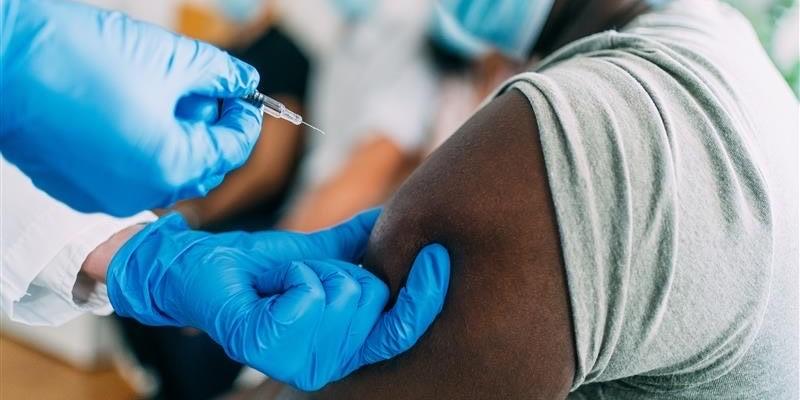Only one in four clinical trial participants identify as an underrepresented minority. Learn how an Adtalem expert is dedicating her career to improving representation.
In the U.S. Food and Drug Administration’s 2020 Drug Trials Summary Report, 75% of clinical trial participants identified as White, creating a notable imbalance in diverse representations of the global population.
Dr. Nadine Spring has dedicated her career to changing these figures and improving diversity in clinical trials.
Clinical trials are research studies that evaluate the safety and effectiveness of new medical treatments, interventions, or procedures in human volunteers. These trials are essential for advancing medical knowledge and improving patient care by testing the efficacy and safety of potential new therapies before they are approved for widespread use.
Dr. Spring completed her PhD in Public Health from Walden University in 2023. She’s currently a professor of public health at the University of Bridgeport and founder of Springwell 360, an organization dedicated to promoting health equity, research justice, and optimal wellness for underserved communities. SpringWell360 addresses disparities in healthcare through advocating for diversity in clinical trials and fostering inclusivity in medical studies.
In this Q&A, she shares her current and historical perspectives on the importance of representation and how it could be achieved.
In April, you were a presenter at MAGI2024 WCG Clinical Services’ annual conference for clinical research professionals. What did your presentation cover?
I was part of a panel that presented on “In It for the Long Haul: Innovative Approaches to Partnerships and Community Engagement for Diversity in Clinical Trials.” My presentation was about how community partnerships can help to sustain diversity in clinical trials, and the reason why that’s important is historically we have had a very homogeneous group of people participating in clinical trials resulting in the issue we have now where researchers are not very certain how generalizable study findings could be for everyone.
What are some of the big conversations happening in these conference settings when it comes to improving diversity in trials?
One big conversation is community partnerships and trust. What can we do to make sure that we’re not just showing up, getting what we need and then leaving?
We must also acknowledge the historical injustices. For instance, a lot of what’s known in gynecology today is attributed to Dr. Marion Sims, but he conducted experiments and procedures on Black slave women without consent and often without anesthesia. We also have what happened in Tuskegee, and what happened to Henrietta Lacks, when her cells were taken without her consent. These are just a few examples.
So, you have that historical exploitation and injustices that happened that still linger in some communities. We must acknowledge that and make sure we are working to rebuild trust, sustain it, and that we are not exploiting certain communities because that has happened in the past.
Your dissertation—“Clinical Research Principal Investigators’ Perspectives of Improving the Diversity of Clinical Research Participants”—is now publicly available via Walden University on ScholarWorks. Tell us about that study and what you learned through the experience.
I interviewed principal investigators and spoke to them about their perspectives on diversity in clinical trials, and there were things I found I didn’t even know beforehand.
One of the things I learned in the themes that emerged from the study was principal investigators must go through extra training on top of their medical school curriculum, residency, and fellowship, but none of that training really prepares them how to reach underrepresented populations.
When you look at something recently like the COVID-19 pandemic, we saw the dire need to make sure that we’re not using a one-size-fits-all approach. We saw what communities were disproportionately affected, and unfortunately, it’s not limited to that recent instance.
But now because of what happened during the pandemic, agencies like the Food and Drug Administration and National Institutes of Health are now pushing for more representation in their research studies to reach underserved populations and stay away from a one-size-fits-all approach to recruiting participants in medical research studies.
Another thing I learned is we need to reshape the eligibility criteria for many of these clinical trials to reflect real-world participants. There are studies that will automatically exclude the average patient living with that condition being studied. One reason for that is laboratory values.
There is much work still to be done to improve diversity, but in your time as a public health professional, what improvements have already been accomplished?
I started at Walden University in 2019 and already knew my dissertation would be on diversity in clinical trials. But I hadn’t fine-tuned it yet. At first, I thought it was going to be on why people from underrepresented groups don’t participate in trials.
In 2019, this was a pre-COVID world where I already spent years working in clinical research knowing not much was being done about increasing representation in trials. Overall, there were no big conferences where there were sections, seminars, and symposiums on diversity in clinical trials.
There has been a lot of change since then. I think diversity and representation in clinical trials is on a lot of people’s radars now, even though it has always been known that this was an issue in the field, and you need representation to advance medicine for all.
To make healthcare equitable, it really depends on diversity in clinical trials. I see there’s been positive changes, and I am inspired by the changes. Now, it’s on a lot of the regulatory agencies radars to make recommendations for diversity plans for medical research studies.
For more information, email the Adtalem Global Communications Team: adtalemmedia@adtalem.com.




